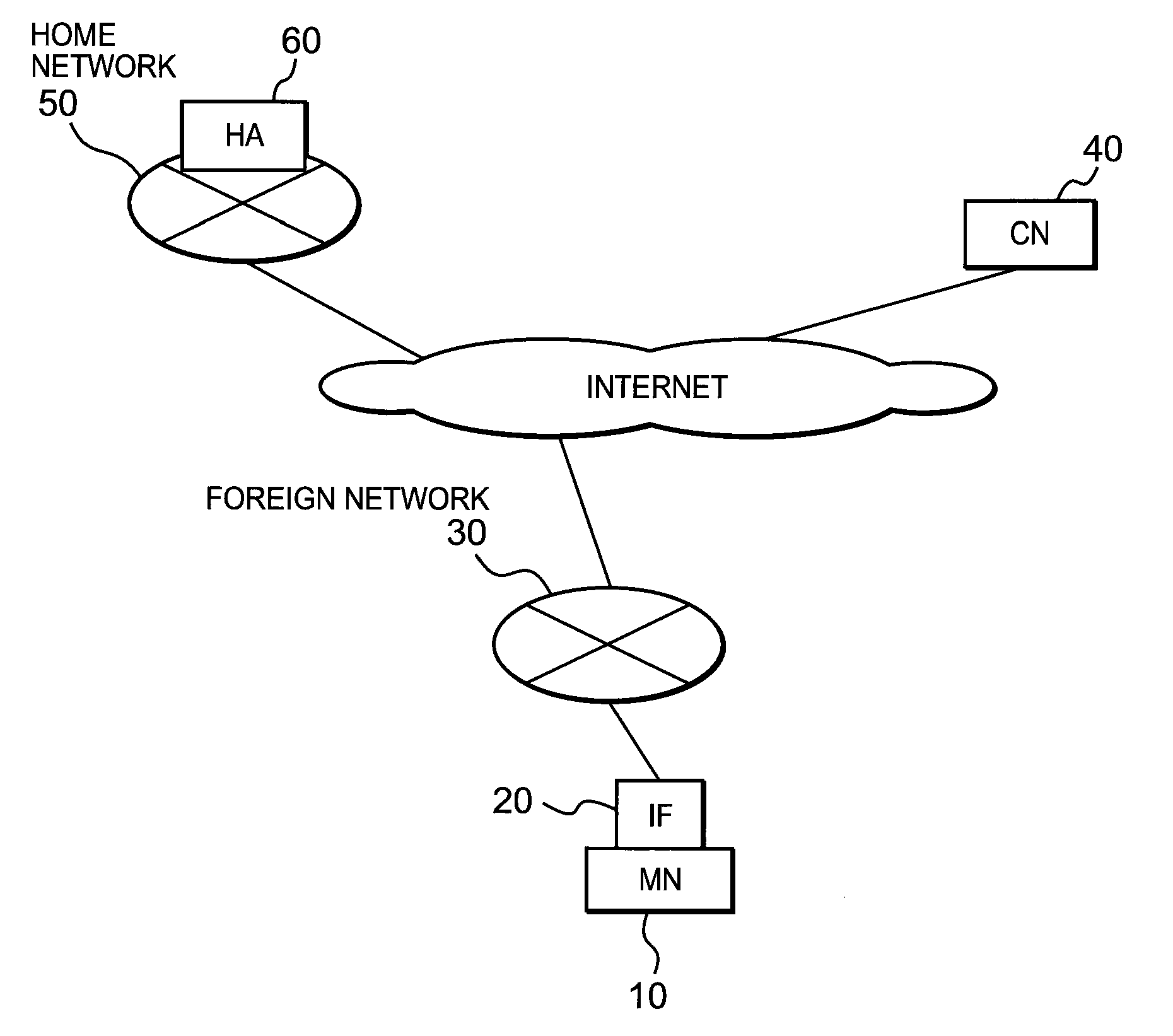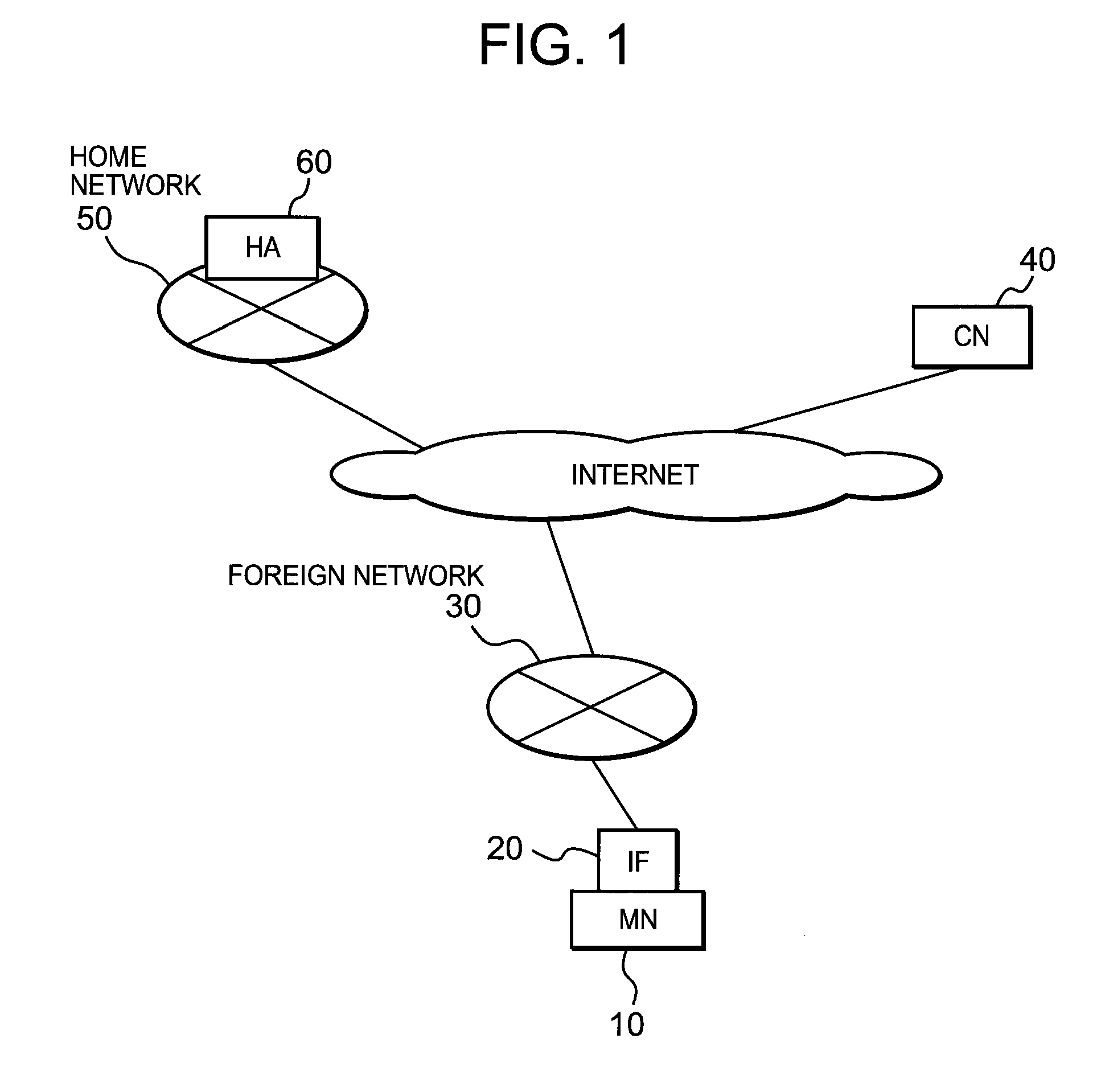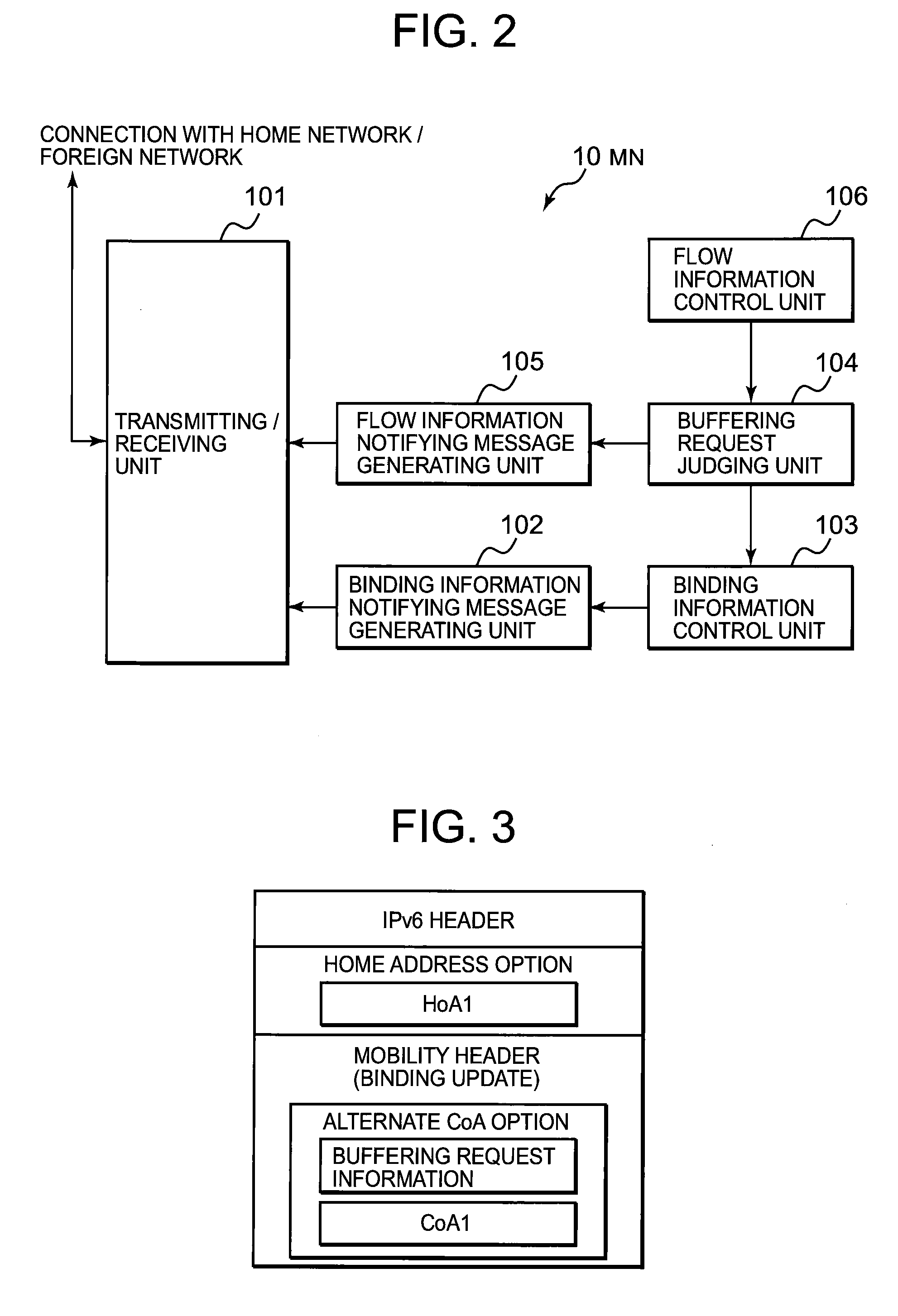Packet transfer control device and mobile node
a control device and packet technology, applied in the field of communication control methods, can solve problems such as failure or trouble in the communication performed by using network, and packet loss or time delay, so as to achieve the effect of suppressing packet loss and intentionally delaying the packet transfer to the mobile nod
- Summary
- Abstract
- Description
- Claims
- Application Information
AI Technical Summary
Benefits of technology
Problems solved by technology
Method used
Image
Examples
1st embodiment
[0061]First, description will be given on the first embodiment of the invention. FIG. 1 shows an example of network arrangement in the first embodiment of the invention. In FIG. 1, MN 10 can utilize HA 60 in a home network 50 as its own home agent. A home address (HoA1) is assigned to MN 10 from the home network 50, and this HoA1 is controlled by HA 60. In FIG. 1, MN 10 is connected to a foreign network 30 via an interface (IF) 20, and CoA1 is assigned from the foreign network 30. On the other hand, it is supposed that the communication to and from CN 40 is performed via HA 60 by using HoA1.
[0062]Next, description will be given on an arrangement of MN 10 in the first embodiment of the invention. FIG. 2 shows an example of arrangement of MN 10 in the first embodiment of the invention. In FIG. 2, MN 10 has a transmitting / receiving unit 101, a binding information notifying message generating unit 102, a binding information control unit 103, a buffering request judging unit 104, a flow ...
2nd embodiment
[0106]Next, description will be given below on a second embodiment of the invention. FIG. 7 shows an example of network in the prevent invention. In FIG. 7, MN 10 can utilize HAs (HA 60 and HA 80), which are present in a plurality of home networks (home networks 50 and 70) respectively. Home addresses (HoA1 and HoA2) of the home networks 50 and 70 are assigned to MN 10 respectively, and these home addresses HoA1 and HoA2 are controlled by HAs (HA 60 and HA 80) respectively. It is supposed in FIG. 7 that MN 10 is connected to the foreign network 30 via an interface (IF) 20 and CoA1 is assigned from the foreign network 30, and that communication via HA 60 is performed by using HoA1 for the communication with CN 40.
[0107]The number of interfaces used by MN 10 is not limited to one, and two or more interfaces may be used. In this case, two or more care-of addresses may be associated with each of HoA1 and HoA2 respectively. Also, the number of HAs (HA 60 and HA 80) usable by MN 10 is not...
3rd embodiment
[0161]Next, description will be given on a third embodiment of the invention. The third embodiment of the invention is basically a combination of the first embodiment and the second embodiment of the invention. In the third embodiment, actual example of the network arrangement will be described with the network arrangement shown in FIG. 7 as the precondition.
[0162]First, description will be given on the arrangement of MN 10 in the third embodiment of the invention. FIG. 11 shows an example of arrangement of MN 10 in the third embodiment of the invention. In FIG. 11, MN 10 comprises a transmitting / receiving unit 301, a binding information notifying message generating unit 302, an HoA1 binding information control unit 303, an HoA2 binding information control unit 304, a pre-transfer buffering request judging unit 305, a flow information notifying message generating unit 306, a home address association judging unit 307, a flow information control unit 308, and a buffering request judgi...
PUM
 Login to View More
Login to View More Abstract
Description
Claims
Application Information
 Login to View More
Login to View More - R&D
- Intellectual Property
- Life Sciences
- Materials
- Tech Scout
- Unparalleled Data Quality
- Higher Quality Content
- 60% Fewer Hallucinations
Browse by: Latest US Patents, China's latest patents, Technical Efficacy Thesaurus, Application Domain, Technology Topic, Popular Technical Reports.
© 2025 PatSnap. All rights reserved.Legal|Privacy policy|Modern Slavery Act Transparency Statement|Sitemap|About US| Contact US: help@patsnap.com



